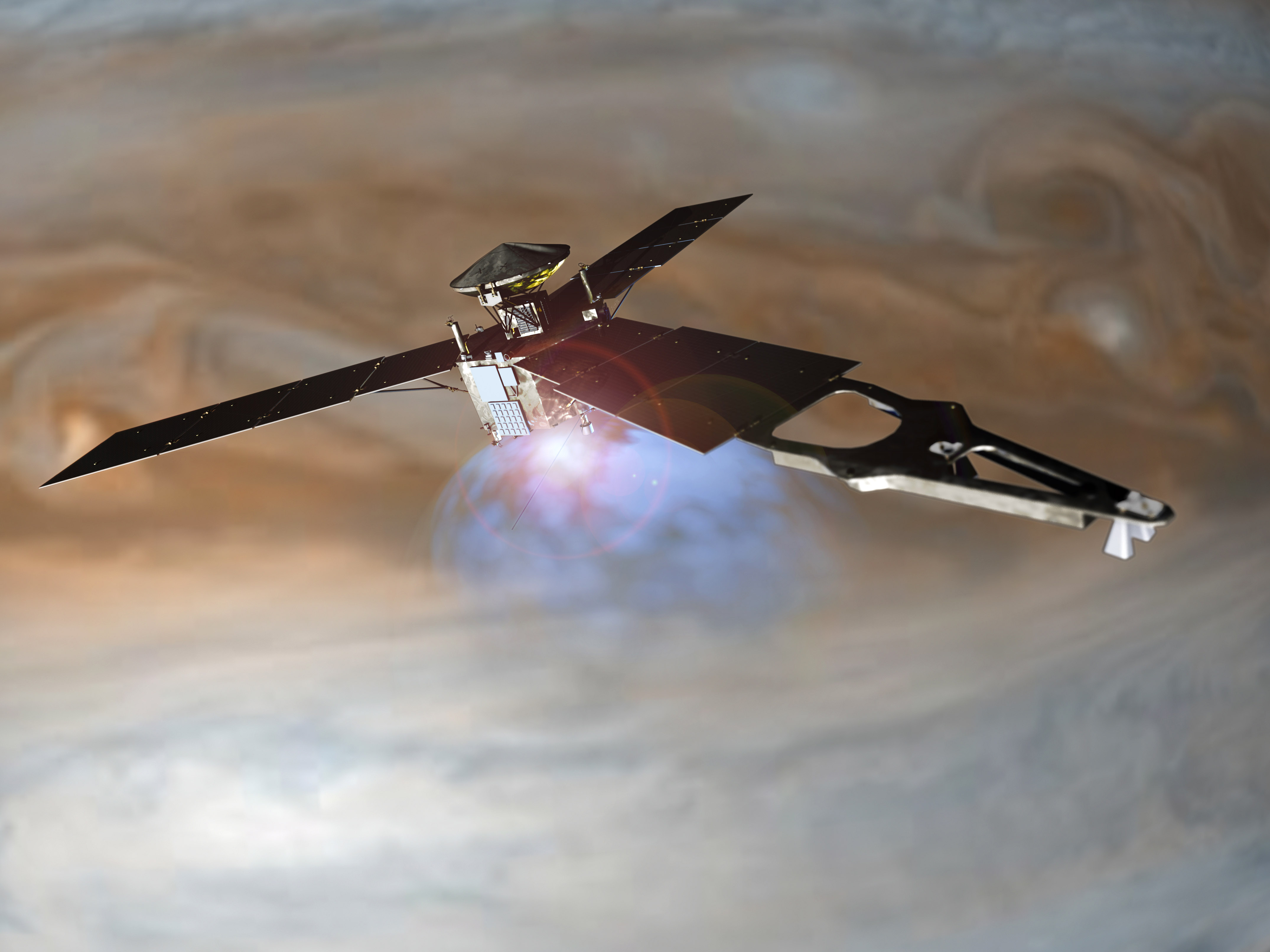The
Juno
spacecraft made history on July 4th, 2016, when it became the second spacecraft in history to achieve orbit around Jupiter for the sake of a long-term mission. Following in the footsteps of the
Galileo
mission, the probe will spend the next 20 months gathering data on Jupiter's atmosphere, clouds, interior and gravitational and magnetic fields, before purposefully crashing into the planet.
And on Saturday, August 27th, Juno will be making history once again. According to NASA, at precisely 12:51 UTC (5:51 a.m. PDT, 8:51 a.m. EDT) the spacecraft will be passing closer to the cloud tops of Jupiter than at any point in its main mission. And while the probe is expected to make 35 more close flybys of the gas giant before its mission ends in February of 2018, this particular one is expected to be especially revealing.
For one, it will be the first time that the probe has all of its scientific instruments online and surveying Jupiter's atmosphere as it swings past. And during the flyby, the probe will be passing Jupiter's cloud tops at a distance of 4,200 kilometers (2,500 miles) - closer than it will ever get again - while traveling at a speed of 208,000 km/hour (130,000 mph).
[caption id="attachment_129595" align="aligncenter" width="580"]
This annotated color view of Jupiter and its four largest moons -- Io, Europa, Ganymede and Callisto -- was taken by the JunoCam camera on NASA's Juno spacecraft on June 21, 2016, at a distance of 6.8 million miles (10.9 million kilometers) from Jupiter. Image credit: NASA/JPL-Caltech/MSSS
[/caption]
This will not only be the closest approach to Jupiter made by any probe, but it will pass over Jupiter's poles, which will give
Juno
the opportunity to get a look at some never-before-seen things. These will include infrared and microwave readings taken by Juno's suite of eight instruments, but also some choice photographs.
Yes, in addition to its sensor package,
Juno
's visible light imager (aka. JunoCam) will also be active and taking some close-up pictures of the atmosphere and poles. While the scientific information is expected to keep NASA scientists occupied for some time to come, the JunoCam images are expected to be released later next week.
According to NASA, these images will be the highest resolution photos of the Jovian atmosphere ever taken, not to mention the first glimpse of Jupiter's north and south poles ever. As Scott Bolton, principal investigator of
Juno
from the Southwest Research Institute in San Antonio, said in a
NASA press release
:
[caption id="attachment_128262" align="aligncenter" width="580"]
NASA's Juno spacecraft launched on August 6, 2011 and should arrive at Jupiter on July 4, 2016. Credit: NASA / JPL
[/caption]
Ever since the Juno spacecraft launched on Aug. 5th, 2011, from Cape Canaveral, Florida, scientists and astronomers have been waiting for the day when it would start sending back information on the Solar System's greatest planet. By examining the atmosphere, interior, and magnetic environment of the gas giant, scientists hope to be able to answer burning questions about the history of the planet's formation.
For example, Jupiter's interior structure and composition, as well as what drives its magnetic field, are still the subject of debate. In addition, there are some unanswered questions about when and where the planet formed. While it may have formed in its current orbit, some evidence suggests that it could have formed farther from the sun before migrating inward. All of these questions, it is hoped, are things the
Juno
mission will answer.
In so doing, scientists hope to be able to shed some additional light on the history of the Solar System as well. Like the other gas giants, it was assembled during the early phases, before our Sun had the chance to absorb or blow away the light gases in the huge cloud from which both were born. As such, Jupiter's composition could tell us much about the early Solar System.
And this Saturday, the probe will be gathering what could prove to be the most crucial information its mission will produce. And of course, if all goes well, it will be taking the most detailed pictures of the Jovian giant to date! Godspeed, little Juno. You be careful out there!
Further Reading: NASA
 Universe Today
Universe Today
